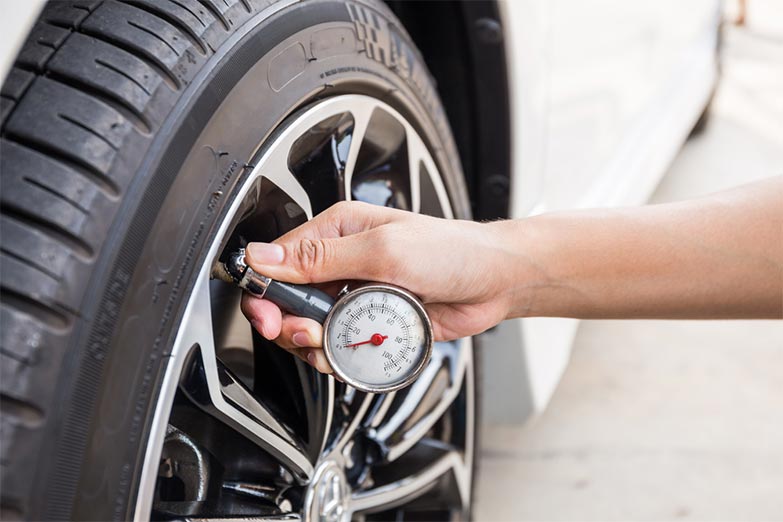Maintaining proper tire pressure is essential for ensuring safety, improving fuel efficiency, and prolonging the lifespan of your vehicle’s tires. Here’s a guide on how to do it:
- Check Tire Pressure Regularly: Make it a habit to check your tire pressure at least once a month. It’s best to do this when the tires are cold, as driving heats them up and can give inaccurate readings.
- Use a Tire Pressure Gauge: Purchase a reliable tire pressure gauge. You can choose from digital or analog gauges. Digital gauges are often easier to read.
- Find the Recommended Pressure: The recommended tire pressure for your vehicle can usually be found in the owner’s manual, on a sticker inside the driver’s side door jamb, or sometimes inside the fuel filler flap. It’s measured in PSI (pounds per square inch).
- Check and Adjust: Remove the valve cap from the tire stem and press the tire pressure gauge firmly onto the valve stem to get a reading. Compare this reading to the recommended pressure. If it’s too low, use an air compressor to add air until it reaches the proper level. If it’s too high, you can release some air by pressing the center pin in the valve.
- Repeat for All Tires: Remember to check the pressure in all four tires, including the spare tire if your vehicle has one.
- Inspect Tires for Damage: While checking the pressure, take a moment to visually inspect the tires for any signs of damage, such as cuts, bulges, or uneven wear. Address any issues promptly.
- Maintain Consistent Pressure: Keep all tires inflated to the recommended pressure. Underinflated tires can lead to poor handling, reduced fuel efficiency, and increased risk of blowouts. Overinflated tires can cause a harsh ride and uneven tire wear.
- Monitor Pressure Changes: Tire pressure can fluctuate with changes in temperature, so it’s a good idea to check it more frequently during extreme weather conditions.
- Replace Valve Caps: Valve caps help keep dirt and moisture out of the valve stem, which can prevent leaks. Make sure they are in place and in good condition.
- Consider Nitrogen Fill: Some people opt for nitrogen instead of regular air for tire inflation. Nitrogen is less prone to pressure changes due to temperature variations, but it can be more expensive and may not be readily available everywhere.
By following these steps, you can ensure that your vehicle’s tires are properly inflated, which contributes to safer and more efficient driving.


